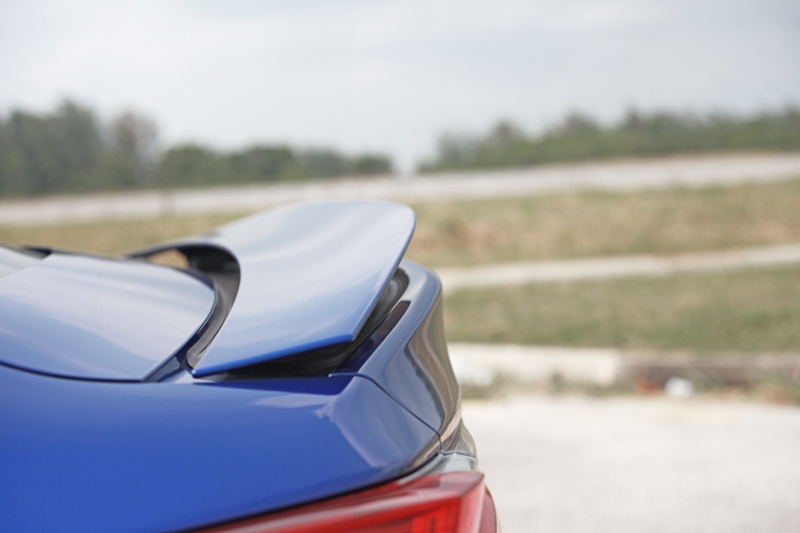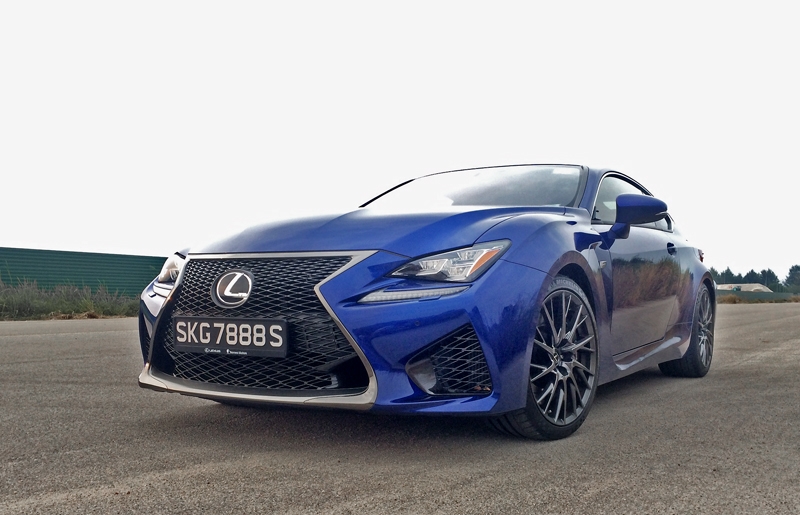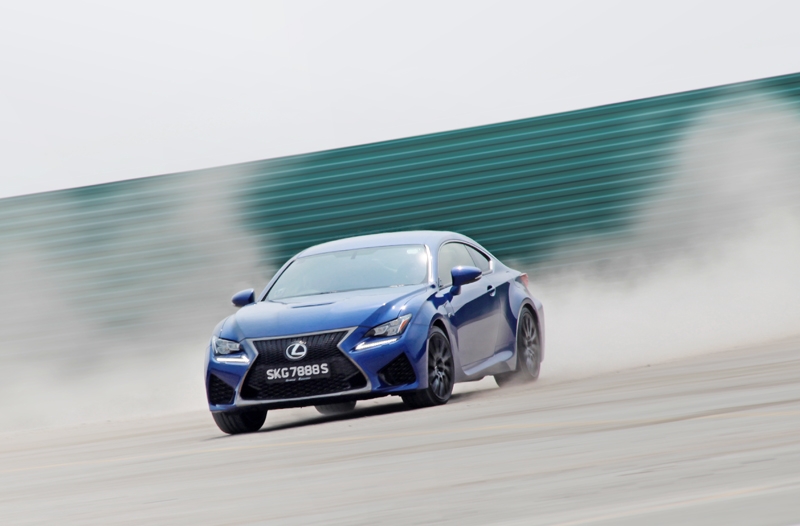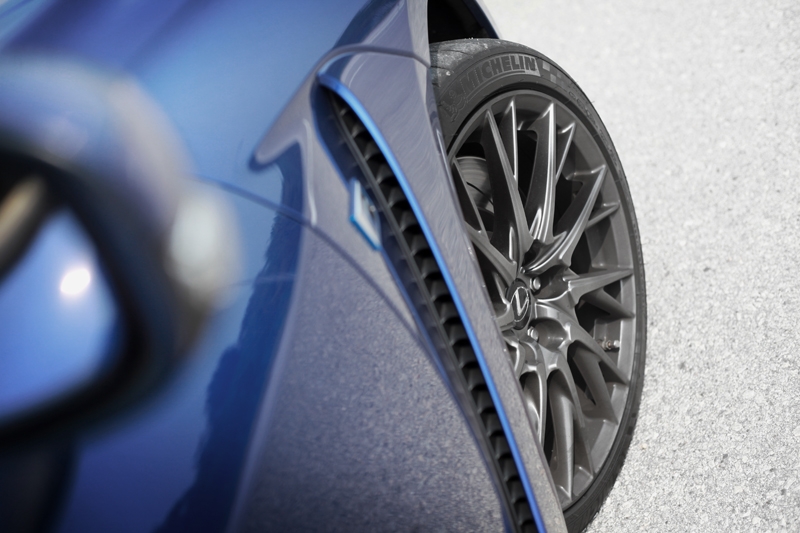Lexus enters the high performance coupe segment - does it have enough mettle to throw off the usual suspects?
Photos: Joel Tam
It’s a very tough fight in this game. Well, it wasn’t this tough previously, but over time, the likes of BMW’s M, Mercedes-Benz’s AMG and Audi’s RS divisions all have to push the envelope to dominate; because now there is Jaguar, Maserati and even Porsche all vying for this big-engine-in-a-coupe segment.
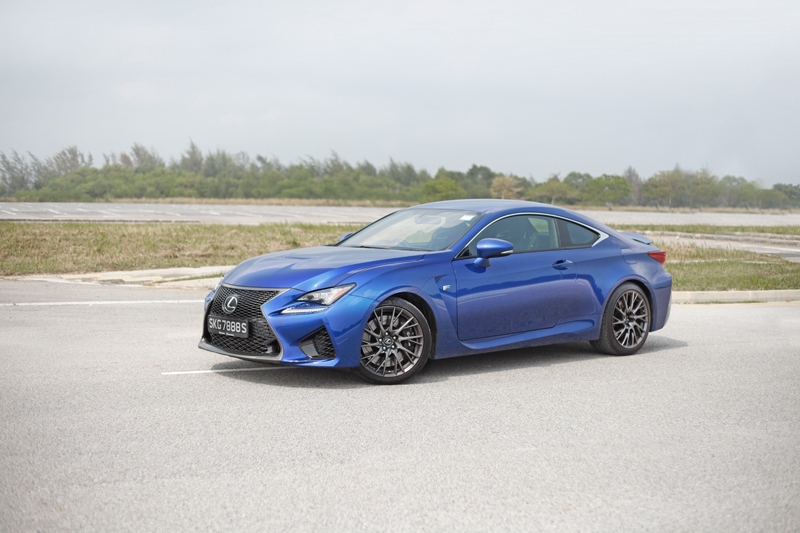
And it seems even Lexus wants a piece of the action, although it seem to be the last comer. Even previously, the IS-F sedan came way after BMW’s M3, Mercedes’s AMG C63 and Audi’s RS4; while it worked at getting the attention from power-hungry buyers who want something reliably Japanese somewhere else, in Singapore’s context, it was a case of a little too late. The fact that it wasn’t as sharp as an M3 or RS4, or even as brutal as a C63 made it even less desirable. But I must ‘fess up though, that I do have a little soft spot for that Lexus; it’s so subtle, so gentlemanly, so easy to drive on a daily basis. The IS-F has one of the most pliant and well-balanced chassis (yes it still errs on the comfier side compared to the three Germans, which was why I must emphasize how livable it is on a daily basis) in the segment, it’s quite a pity it didn’t quite garner enough interest here.
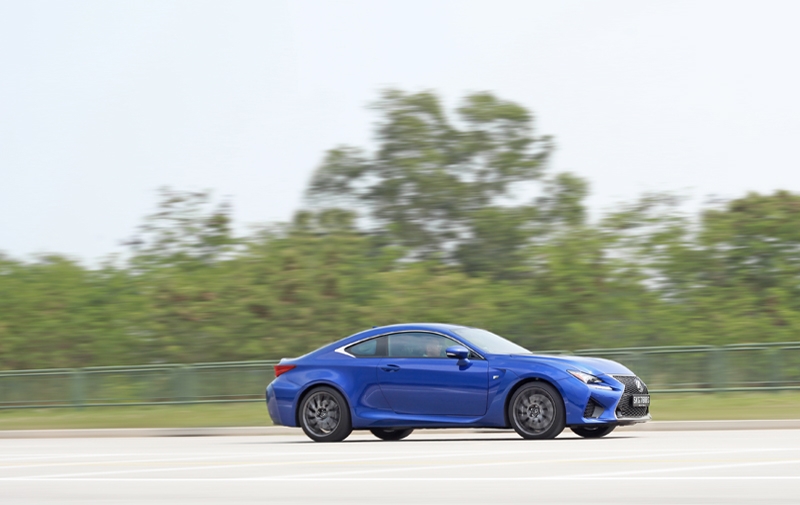
Now back to the RC-F. To begin with, the figures are definitely worthy of respect. 470 bhp and 530 Nm of torque all thanks to a naturally aspirated 5.0-litre V8 that is paired to an 8-speed automatic transmission; 0 to 100 km/h takes a ballistic 4.5 seconds with top speed rated at 270 km/h. Best of all, it is a rear-wheel drive, which would definitely make things even much more fun…
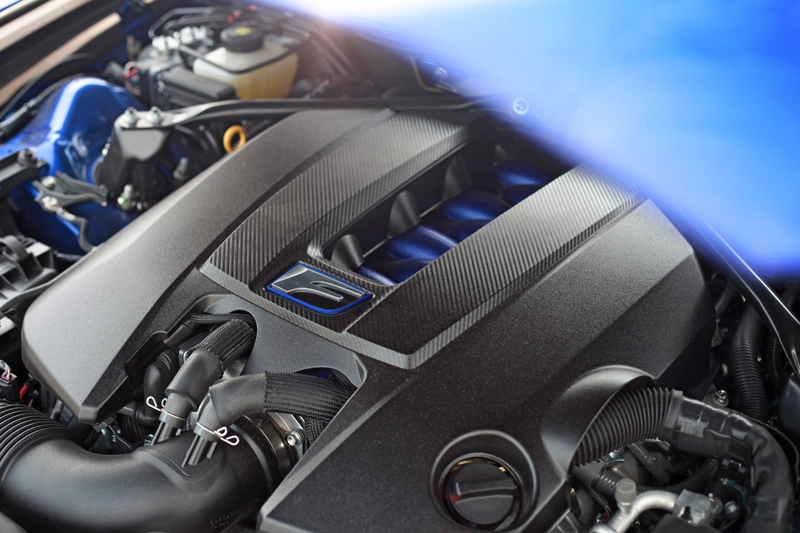
It still retains the same engine size as before - the engine block remains but Lexus changed all the internal running parts to reduce excess weight. However my take here is that we should get the downsized, 3.0-litre M4 out of the list – simply because it now has an engine that is 2-cylinders some 200 cc lesser. Which now leaves the RC-F competing next to the Jaguar F-Type R Coupe and Audi RS5 (that is until the Mercedes-Benz C63 AMG arrives), the other cars in the segment that is still staying true to the whole big-engine-in-a-coupe plot and not giving a hoot to environmentalists.
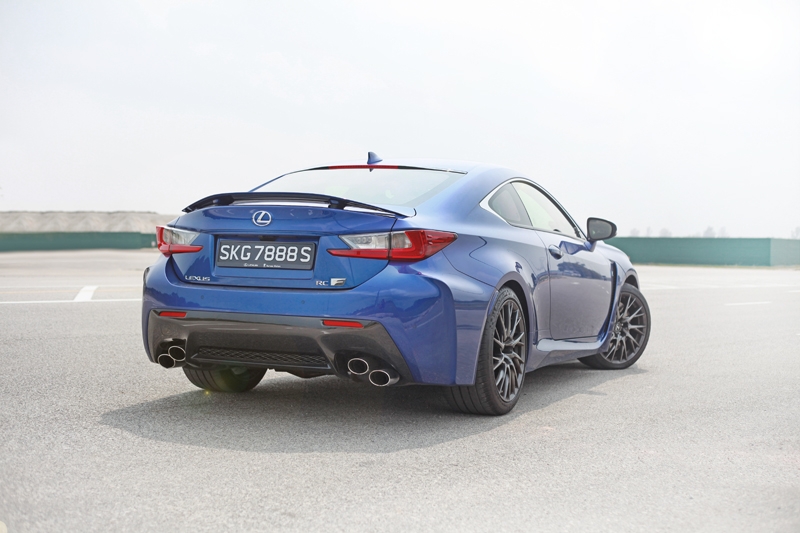
For a start, the RC-F sounds rather fearsome when you switch the engine on. The exhaust growling at idle sounds like an angry bear waiting to be unleashed, with the engine gleefully revving all the way to the 7,300 rpm redline while standing still (and waking the neighbours up, heh… heh… heh…).
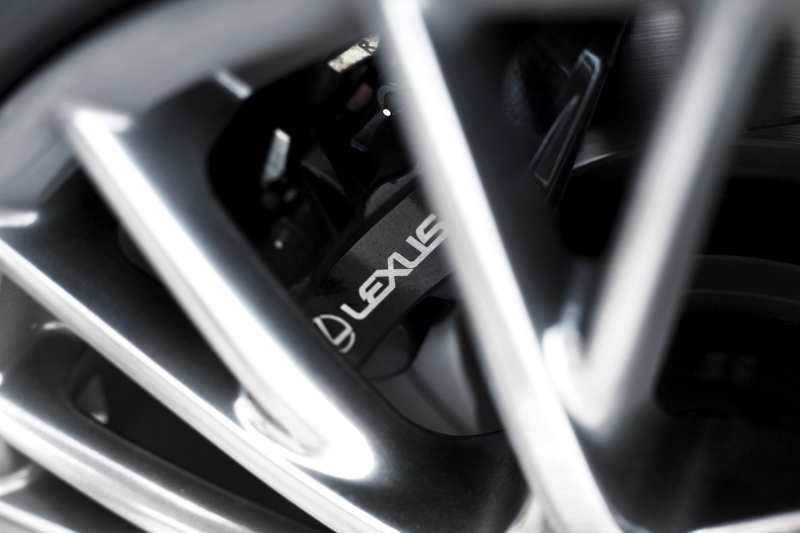
It’s brilliantly quick off the line too. Despite carrying an extra 208 kg over the M4 (we still have to put the M4 as reference here, don’t mind us), 55 kg above the RS5 and 130 kg more than the F-Type R, the RC-F still accelerates forward strongly and rather viciously in Sport+ mode – most importantly in either Sport, Sport+ or Normal modes, the distinct V8 melody encourages you to not ease off the accelerator. A little dangerous if you have limited demerit points left on your driving license, like myself (lost 6 points to the VW Polo TSI and another 6 to the BMW M3. Geez.). But happily, the 6-pot front and 4-pot rear anchors are equally strong and more than able to slow down the car.
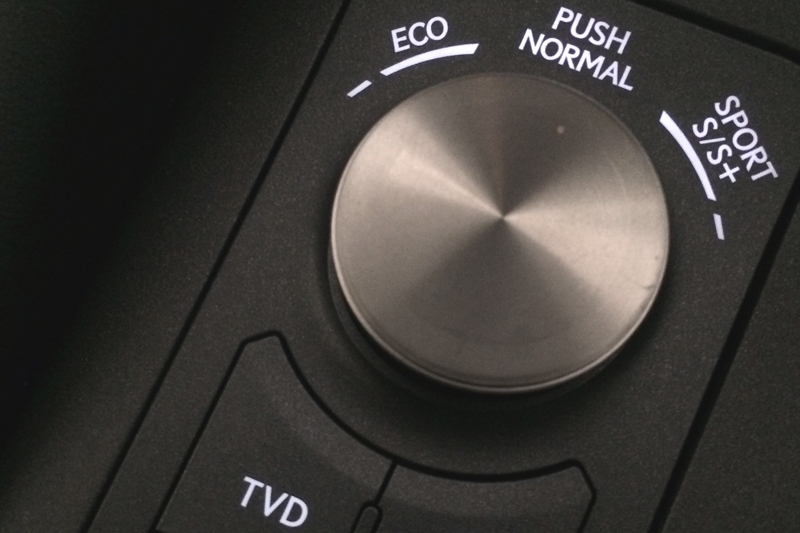
The RC-F can be driven in four different modes, namely Eco, Normal, Sport and Sport+. Unfortunately, the RC-F comes with a fixed suspension setting, and the four modes only alter the engine and transmission response. That said, for the daily grind, Normal is more than enough to see you through while the sharper throttle response in Sport+ ensures no imbecile has the chance to cut you off…
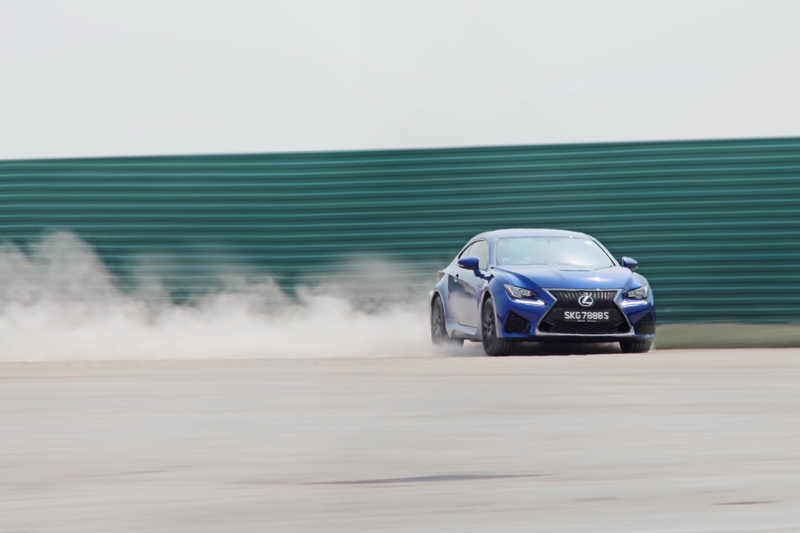
The RC-F also comes standard with Lexus’s TVD, or torque-vectoring differential. There are three modes to select from: Normal, Slalom and Track. Definitely clever and impressive, as it means you can exploit the car safely and there is not much chance of the car’s rear breaking away and then throw you into a silly spin, particularly in Track. The downside here though, is that it feels artificial and you do need time to get used to it.
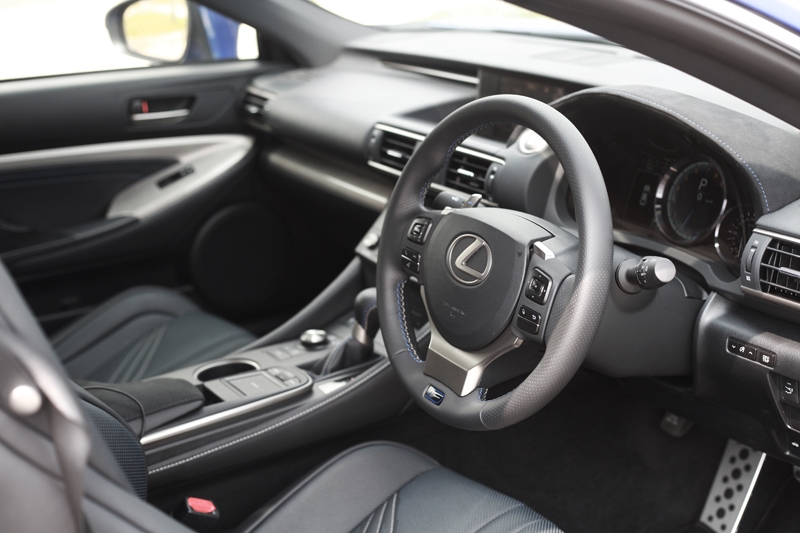
70 percent of my time was spent driving in Sport+ with the TVD in Track mode and me selecting my own gears via the paddle-shifters. Like I’ve mentioned earlier, it feels properly vicious and full of life, although it cannot beat the F-Type R in terms of intensity and brute. But one thing I couldn’t really forgive Lexus is that intrusive center armrest. The seats were supportive, which was great, but with an overly large and unnecessary armrest like that, most of the time while taking a tight left-hander or sweeping left-right-left series of bend, my left arm either (a) got stuck or (b) keep hitting that bloody thing. It. Is. So. Irritating. Whoever thought you need such a big armrest in a sports car like this needs to be slapped on the head. Hard. Twice. Thrice if possible.
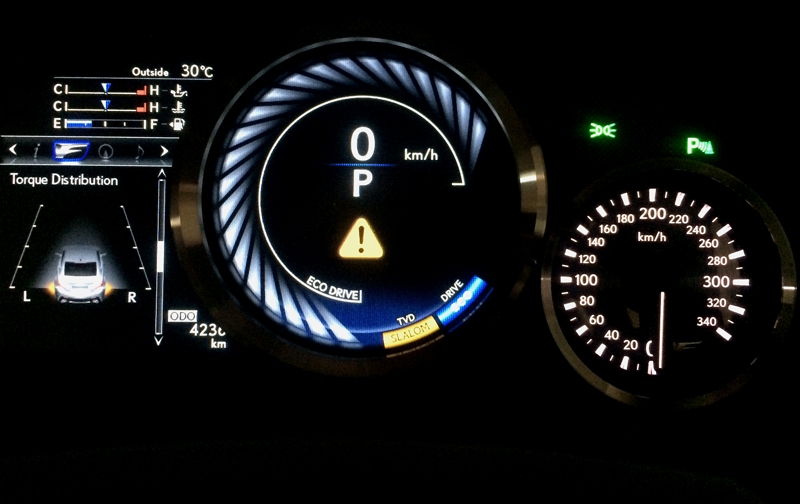
That aside, the rest of the interior is a real gem, feeling more welcoming than the Jag and bolder than Audi. To add on to the sporty theme, Lexus even added Alcantara bits, namely on the instrument binnacle, roof and even (dreaded) armrest. The seats are all wrapped in premium leather, although I wished Alcantara were also used more thoroughly to lessen body movements, particularly while driving enthusiastically. Oh, and here’s another surprise: you can actually accommodate two average-sized adults at the rear.
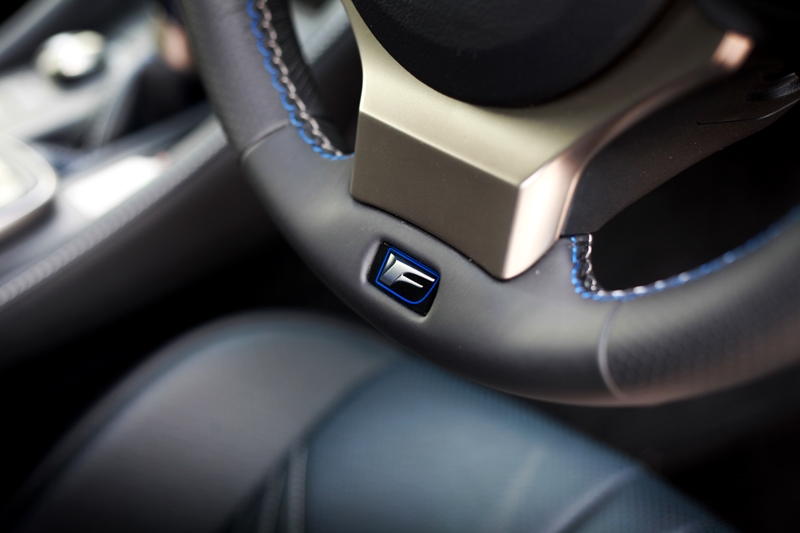
As a whole, the Lexus RC-F is quite a noteworthy competitor in this fierce segment. Plus in this shade of blue, it continuously attracts attention everywhere it went – gotta love Lexus for being very, very bold with the car’s exterior. However, it’d be sensational if Lexus were equally wild with the car’s driving character; yes it is fast and handles trustily, but if only it could be livelier and scare you like the F Type-R…
